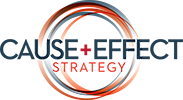Advanced analytics wrings more value from purchase data—for better negotiation tactics, vendor management, and purchasing strategy.
For procurement departments, information is power. Insights gleaned from historical data on product pricing and vendors can strengthen the buyer’s negotiating position and drive better pricing. Few procurement functions are currently making the best use of the huge amounts of data they generate, however.
Why does that matter? Our experience suggests that statistical models and advanced analytics can help procurement departments achieve cost savings of 3 to 8 percent, compared to traditional pricing models. By employing robust data analytics, procurement managers can uncover new insights from data to use in negotiations, vendor segmentation and performance management, and annual purchasing strategy.
Getting more value from procurement data
Procurement functions generate more data than any one employee can track and manage. At one midsize manufacturing company with approximately $2 billion in annual revenue, for example, procurement had data on more than 20,000 transactions for a single category, each with four to five statistically significant drivers of price.
But the models used by most procurement functions dramatically simplify the available data to make it easier for purchasers to handle. A lot of potentially valuable insights get lost along the way. Take the cost curve. This widely used modeling approach provides an overview of the average price paid to range of vendors over a year. The model is appealingly simple, but averaging prices can obscure the most critical aspects of vendor performance. For, say, an agricultural product with significant seasonal price variation, the highest-price vendor may be the only one that can supply the product only during the high-cost season, giving it no incentive to match others’ prices.
The advantages of advanced analytics
Advanced-analytics techniques use algorithms to recognize patterns in complex data sets, allowing procurement analysts to query all their data, determine the statistically significant drivers of price, and cluster data according to those drivers. The resulting clusters represent a set of purchases without significant differences in cost drivers and thus reveal the real differences in vendor performance. A crucial advantage is that unlike people, advanced-analytics systems don’t bias their decisions based on gut feeling, or place undue weight on outliers in the data. Data models also enable the testing of thousands of permutations very quickly to determine which statistical clusters fit the data best.
Three use cases for advanced analytics
Three areas—negotiation, vendor segmentation, and planning—reinforce the value that a statistical approach powered by advanced analytics can deliver.
But what does it take to integrate advanced analytics into procurement operations?
The good news is that almost every organization already has the necessary resources and capabilities. If procurement has a record of historical purchases, transitioning from heuristic approximations to data-driven analytics can be accomplished in a few months with targeted efforts in three key areas.
For deeper insights into purchasing data and trends, we find that advanced analytics-based systems beat traditional models every time, and the capabilities require little added investment. In most cases, all it takes is a change in mind-set. Since the potential savings from better-informed negotiations are so substantial, procurement functions have no excuse for delay.
